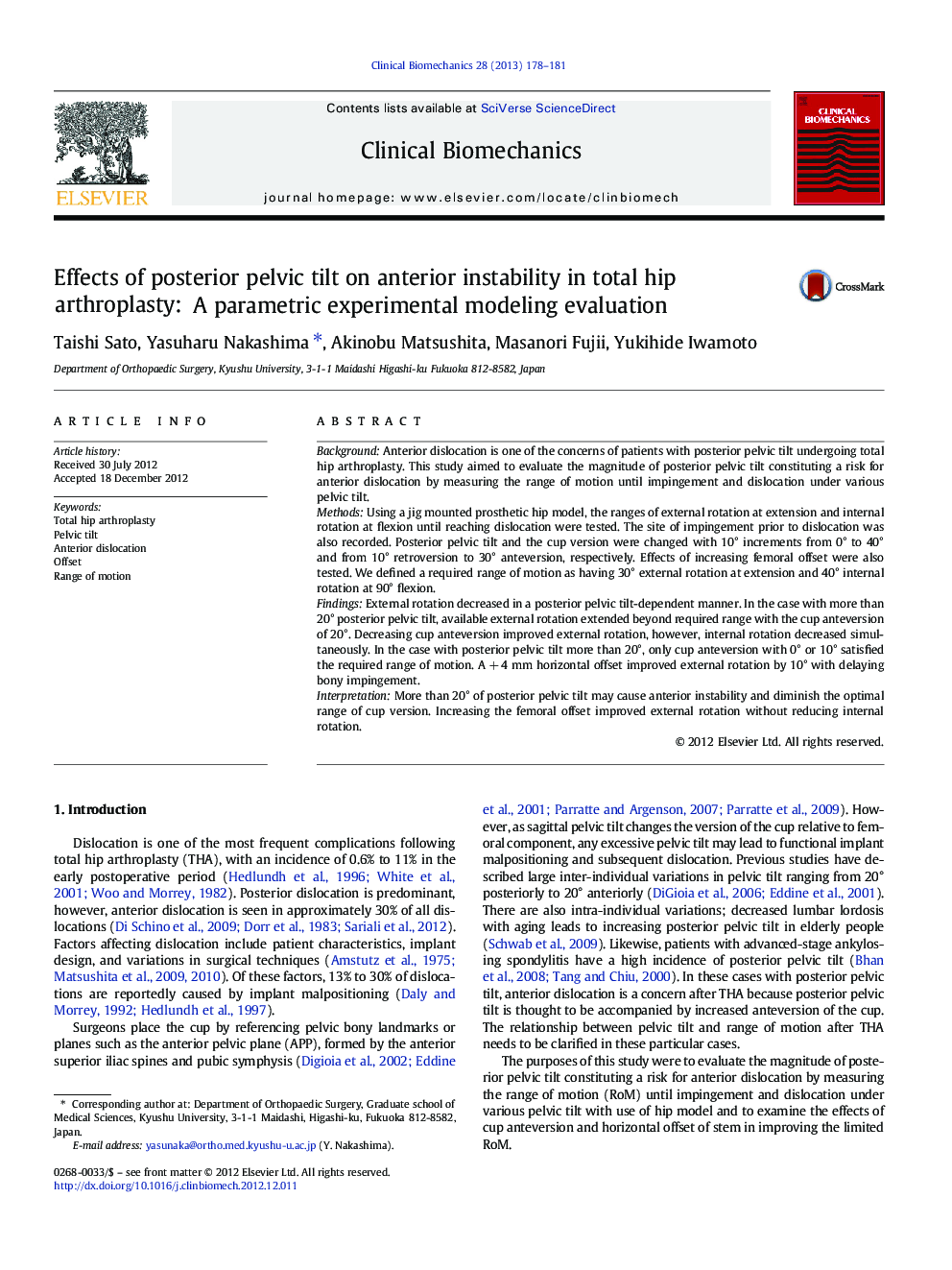| Article ID | Journal | Published Year | Pages | File Type |
|---|---|---|---|---|
| 6205053 | Clinical Biomechanics | 2013 | 4 Pages |
BackgroundAnterior dislocation is one of the concerns of patients with posterior pelvic tilt undergoing total hip arthroplasty. This study aimed to evaluate the magnitude of posterior pelvic tilt constituting a risk for anterior dislocation by measuring the range of motion until impingement and dislocation under various pelvic tilt.MethodsUsing a jig mounted prosthetic hip model, the ranges of external rotation at extension and internal rotation at flexion until reaching dislocation were tested. The site of impingement prior to dislocation was also recorded. Posterior pelvic tilt and the cup version were changed with 10° increments from 0° to 40° and from 10° retroversion to 30° anteversion, respectively. Effects of increasing femoral offset were also tested. We defined a required range of motion as having 30° external rotation at extension and 40° internal rotation at 90° flexion.FindingsExternal rotation decreased in a posterior pelvic tilt-dependent manner. In the case with more than 20° posterior pelvic tilt, available external rotation extended beyond required range with the cup anteversion of 20°. Decreasing cup anteversion improved external rotation, however, internal rotation decreased simultaneously. In the case with posterior pelvic tilt more than 20°, only cup anteversion with 0° or 10° satisfied the required range of motion. A + 4 mm horizontal offset improved external rotation by 10° with delaying bony impingement.InterpretationMore than 20° of posterior pelvic tilt may cause anterior instability and diminish the optimal range of cup version. Increasing the femoral offset improved external rotation without reducing internal rotation.
